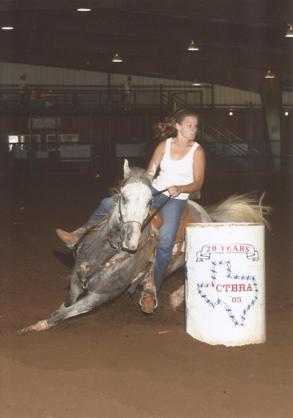|
|
 Member
Posts: 8
Location: Oklahoma | We put the insulation in my trailer....do we need to leave a 3/4in gap between the insulation and paneling on the walls? Or can we put the paneling directly on the insulation? |
|
| |
|
Expert
Posts: 5870
      
Location: western PA | Depending on the type of insulation you used, it is advisable to add a vapor barrier between your paneling and the insulation. The paneling can then be attached directly against the insulation with no airspace. BOL Gard |
|
| |
|
 Member
Posts: 8
Location: Oklahoma | We used the insulation with the foil backing on it. What would happen if we didn't leave a vapor barrier between the insulation and paneling? |
|
| |
|
 Extreme Veteran
Posts: 385
     
Location: washington | I insulated an entire gooseneck tack area with 3' short wall using the foil backed insulation. I then put furring strips up on the walls and ceiling, and finally the paneling. This provided a little air space. I did not have any problems with condensaton once the insulation was in. I used aluminum tape to secure the insulation which sealed the seams nicely. |
|
| |
|
Expert
Posts: 5870
      
Location: western PA | By using a foil backed insulation, and the foil is facing towards the inside living space, you have created a vapor barrier and nothing else is needed. Any open seams should be taped. As was previously mentioned, the addition of furring strips will make the application of your wall paneling much easier to finish off. BOL Gard |
|
| |
|
Veteran
Posts: 150
  
Location: Farmville, VA | Grad, Just went to Lowes, they had a few products for insulation. Two were foam board core with a thin layer of plastic on each side and the other was like bubble wrap with foil. Which one do you reccomed that I use, or both? Does the thin layer of plastic count for the vapor barier? Thanks! |
|
| |
|
Veteran
Posts: 150
  
Location: Farmville, VA | Opps! GARD! Sorry! |
|
| |
|
Expert
Posts: 5870
      
Location: western PA | Both can be used depending on where it is being applied. The rigid is good for making large straight panels, the bubble type is good for applications on the curved sections, The plastic facing is a good vapor barrier, just tape the seams where there are gaps. BOL Gard |
|
| |
|
 Charter Member
Posts: 251
   
Location: Holland, Tx | Which is more common - running your wiring inside before or after you put in your insulation?? We did the insulation on our trailer as we planned to finish it ourselves. We've since decided (98% sure) we are going to have it done commercially. I was told by one place that all the insulation had to be torn out to run the electrical first and if we didn't do it ourselves, they would charge us to do it. |
|
| |
|
Expert
Posts: 5870
      
Location: western PA | The wiring is usually installed before you insulate. The wiring should be away from the interior surface as much as possible, to try to eliminate damage or shorting, if long fasteners are used on an interior panel. If you do install wiring, it is a good idea to photograph your installation before covering it with your insulation. If there are any problems down the line, you can exactly know where you ran the wiring. BOL Gard |
|
| |
|
Regular
Posts: 74
 
Location: IN | Which is better, the rigid or the foil covered bubble wrap? Could I use the bubble wrap kind all the way around? If I used it and attached the firring strips on top of it, it seems I would have a little protection for the strips as well. Which is better for insulating a trailer? |
|
| |
|
Expert
Posts: 5870
      
Location: western PA | Originally written by Dunagain on 2008-01-12 9:20 AM
Which is better, the rigid or the foil covered bubble wrap? Could I use the bubble wrap kind all the way around? If I used it and attached the firring strips on top of it, it seems I would have a little protection for the strips as well. Which is better for insulating a trailer? "Which is better for insulating?" has a couple of different answers depending on what your concerns are. Better if you meant insulating qualities, would be a no. The rigid has a higher "R" factor and would offer more insulating qualities. The foil faced bubble can be used for the whole space and would be a better choice for ease of installation. I went to a conversion company's construction area, and they were using this material to insulated a LQ. The area you are heating is quite small and is very weather proof. It doesn't take a lot of BTUs to maintain a comfortable interior temperature. A small electric cube heats our LQ easily. Your main concern is a small amount of insulation and a vapor barrier to eliminate condensation. Obviously the better it is insulated, the easier it will be to cool or heat the space. BOL Gard
Edited by gard 2008-01-12 10:20 AM
|
|
| |
 Insulation question
Insulation question Insulation question
Insulation question